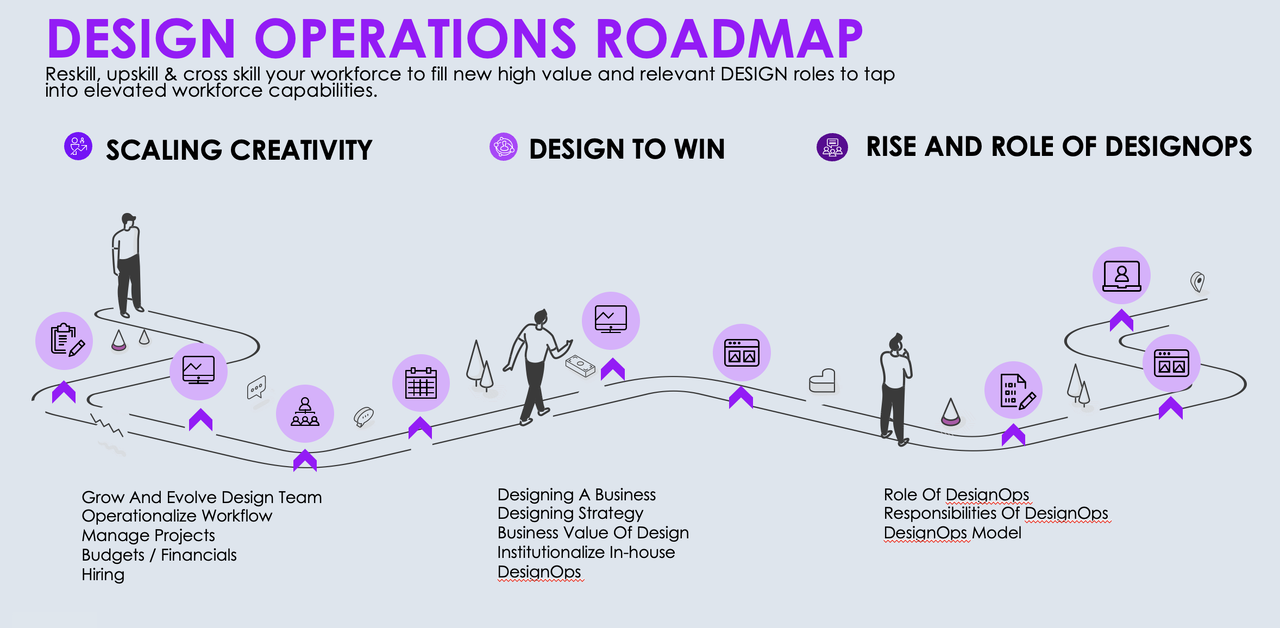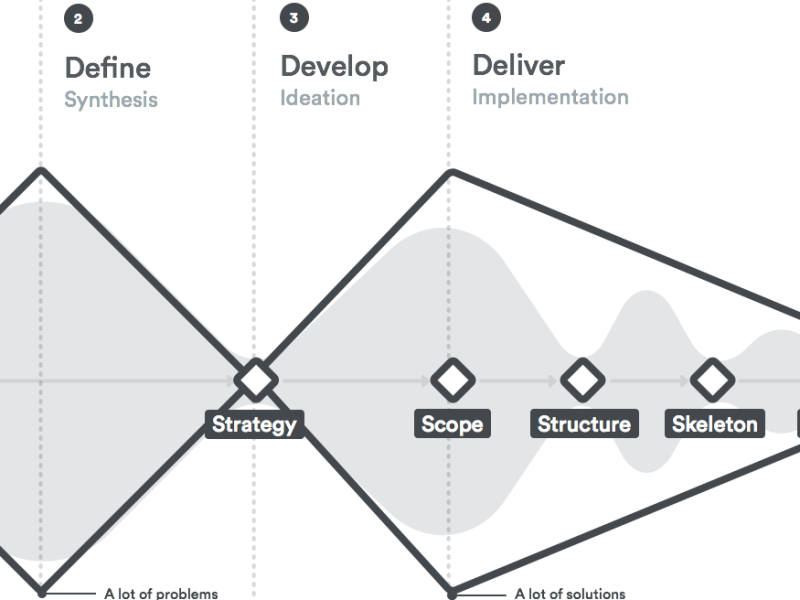DesignOps is the orchestration and optimization of people, processes, and craft to amplify the value and impact of design at scale.
It focuses on streamlining design workflows, fostering collaboration, and enhancing the efficiency and effectiveness of design processes.
By ensuring that design teams operate smoothly, DesignOps bridges the gap between design and other organizational functions, such as product management, engineering, and marketing, to deliver cohesive, high-quality user experiences.
When Do You Need DesignOps?
Organizations typically consider implementing DesignOps when facing challenges such as:
- Scaling and evolving design teams to support organizational growth.
- Recruiting and building teams with the right skills for present and future demands.
- Optimizing design workflows to reduce inefficiencies.
- Elevating the quality and impact of design outputs across projects and products.
DesignOps is particularly valuable for organizations with multiple or geographically distributed design teams. It provides frameworks to scale efforts efficiently while maintaining consistency and quality.
3 Steps to Scaling Creativity in an Organization
1. Grow and Evolve Design Skills
- Assessment: Evaluate the current skill sets of the design team, identifying strengths and gaps.
- Baseline Definition: Establish a baseline for existing skills and define future-focused design skills aligned with organizational goals.
- Market Alignment: Deconstruct roles and processes into key tasks and capabilities, aligning with industry best practices.
2. Scale Design Skilling
- Pilot Transformation: Develop a roadmap for role-based learning, tailored to different skill levels and learning preferences.
- Curriculum Updates: Create and maintain an up-to-date curriculum that addresses emerging skills and market demands.
- Pivot Workforce: Enable the team to adapt to new challenges and opportunities as skills evolve.
3. Go Digital
- On-Demand Learning: Leverage digital platforms to provide scalable, on-demand learning experiences.
- Dynamic Roles: Continuously source, develop, or automate roles and skills to meet evolving needs.
- Operational Excellence: Streamline onboarding and optimize resource allocation through technology-driven processes.
Why DesignOps Matters
Good design is good business. In today’s fast-paced, competitive market, the ability to deliver high-quality products quickly and at scale is critical.
DesignOps ensures that teams are equipped to meet these demands while fostering innovation and maintaining a focus on user needs.
Moreover, the socio-economic challenges of recent years have highlighted the importance of agility. Organizations must adapt swiftly to changes, prioritizing user experience and understanding human needs to remain competitive.
The Role of DesignOps Teams
DesignOps teams are the backbone of design organizations, enabling designers, writers, researchers, and other contributors to focus on their craft. Their responsibilities include:
- Operations: Managing tools, resources, and workflows.
- Onboarding: Ensuring new team members integrate smoothly.
- Culture/Teambuilding: Fostering collaboration and maintaining a positive work environment.
- Project Management: Overseeing timelines, deliverables, and cross-functional coordination.
- Communication Strategy: Facilitating clear and consistent communication.
- Process Design: Optimizing workflows for efficiency and scalability.
The Bigger Picture: Elevating Design
Design Operations is not just about operational efficiency—it’s about amplifying the impact of design. By protecting the time and headspace of creative professionals, DesignOps empowers teams to focus on crafting exceptional user experiences, driving innovation, and delivering value to businesses and customers alike.
Sources for Further Reading:
- Nielsen Norman Group: What is DesignOps?
- InVision Blog: The Rise of DesignOps
- Adobe Blog: Scaling Design with DesignOps
- Smashing Magazine: How DesignOps Optimizes Teams
- Medium: DesignOps—A Beginner’s Guide
By adopting DesignOps, organizations can build a sustainable framework that not only scales creativity but also ensures consistency and quality, reinforcing the principle that good design is indeed good business.
The image above belongs to Jay Samson.


